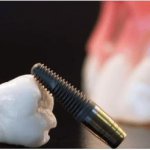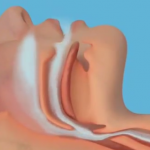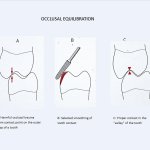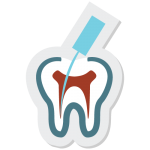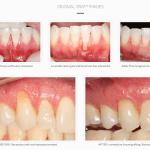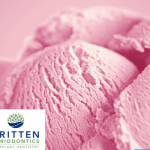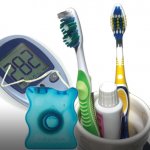If you have any questions about Dental Implants, please contact our team or make an appointment. Our incredible staff will give you the best dental care possible. Contact us today:
Dental implants have become a vital and mandatory option for tooth replacement in recent years. Modern implant dentistry has seen major advancements in popularity and success, including better diagnostic tools for implant planning, periodontal regenerative procedures for better jaw bone support, and high-quality dental implant systems. Dr. Todd Britten is utilizing advancements in dental implant technology in his Clearwater, Florida periodontal practice.
Advances in implant dentistry allow periodontal and dental implant specialist Dr.Todd Britten better tools for diagnosis and implant planning, regenerate lost bone more predictably, and place implants with more accuracy and into more sites than ever before.
Cone Beam Technology
Dr. Todd Britten now uses Cone Beam technology in his Clearwater, FL periodontal office for a better understanding of his patients’ anatomy, allowing him to place dental implants in exactly the right place and more effectively replace missing teeth. Traditional dental x-rays provide a limited picture of the patient’s mouth and jaw. Recent developments in technology have led to Cone Beam imaging, which produces 3D, high-resolution images of the mouth.
Cone beam imaging is different than a traditional dental x-ray because it uses an x-ray beam that is shaped like a cone rather than using a fan shape. After the beam passes through the patient, the remnants are collected on a silicon panel or charge-coupled device (CCD) detector. Hundreds of images are taken and are used together to form a comprehensive image of the patient, including soft tissue.
“This is a very powerful treatment tool in our practice,” says Dr. Britten. “With it, we can work together with our referring dentists to more confidently map our surgical and restorative treatment plans and place and restore implants with accuracy, while protecting our patients and our staff with lower radiation. I have read thousands of CT scans of the jaws but am still amazed at the fine details that I am now able to see in our Cone Beam CT scans.”
Dental professionals often use this type of imaging to determine the precise placement of dental implants. Dr. Britten recommends implants as the leading permanent tooth replacement solution for patients with missing teeth. After evaluating images generated by Cone Beam CT scan imaging, Dr. Britten determines whether or not implants are a good option for each patient, based on factors like jaw bone density. The images will reveal if the patients’ jaw bone is at a healthy enough degree of density to support implants.
Periodontal Regenerative Procedures
If the jaw bone does not have enough support for an implant, other periodontal regeneration procedures can be performed to support an implant. Ridge augmentation uses bone and tissue-grafting procedures to fill in the area where jaw bone has been lost, leaving more bone and better support for dental implant placement. Guided bone regeneration for ridge augmentation has been found to be very predictable. Synthetic growth factors have used for this procedure have improved and we can also use our patient’s own blood to produce materials rich in growth factors, such as L-PRF.
Improved Dental Implant Systems
Once the bone looks healthy enough, Dr. Britten will place the implants by first placing a titanium base in the bone of the jaw. An abutment piece and natural-looking crown will then be attached to the base. Patients will then care for the implants as they would their natural teeth. The ideal candidate for implants is a non-smoker who has good oral health, including a sufficient amount of bone in the jaw and healthy gums with no sign of gum disease.
Implant sizes, materials and systems continue to improve. The titanium alloy used in dental implants now allows for more compact and biocompatible implants while still providing the needed strength to resist the strong bite forces of the mouth. Implant-supported dentures have also come a long way, and many times four implants can be used to retain a complete upper or lower denture.
Dental implants today are not only considered the gold standard of care for tooth replacement, but are usually now considered to be the superior or ideal treatment option for damaged or lost teeth. Dr. Britten said, “We are excited about the many advancements in implant planning, placement and technology. ”
About The Doctor
Britten Periodontics & Implant Dentistry is a periodontal practice offering patients personalized dental care in implant dentistry in Clearwater, Florida. Dr. Todd Britten received his Bachelor of Science & Doctorate of Dental Surgery from University of Florida, a Master’s Degree and Certificate in Periodontology and Implant Dentistry; and completed extensive training at the Institute of Advanced Laser Dentistry. He is one of the only board-certified periodontists in Pinellas County. He is a member of the American Academy of Periodontology, American Dental Association, Florida Association of Periodontists, Upper Pinellas County Dental Association, Hillsborough County Dental Association, Hillsborough County Dental Research Association and Florida West Coast Dental Association.
To learn more about Dr. Britten and his dental services, call (727) 586-2681.
The most successful treatment for Obstructive Sleep Apnea is a CPAP appliance, however, 60% to 83% percent of users cannot tolerate this device.
With the high rejection rate of the CPAP, the American Academy of Sleep Medicine designated dental sleep oral appliances as the No. 1 nonsurgical alternative for the CPAP intolerant. Numerous sleep appliances are available to the public and distributed through dentists.
Your dental professional can help you identify if a sleep appliance may help you. If you have any questions about OSA or dental sleep medicine, contact our office today at 727-586-2681
[iphorm id=”3″ name=”Contact form”]
Occlusal equilibration is a gentle procedure that allows your lower teeth to contact your upper teeth very evenly all the way around your mouth.
The goal of this treatment is to create a “solid bite” that prevents stress on individual teeth and reduces stress on the jaw muscles and jaw joint.
What’s involved? Dr. Todd Britten selectively and precisely reshapes the tiny bumps and valleys of the biting surfaces of individual teeth. Anesthesia is generally not needed, as this procedure is typically pain-free!
We will discuss the need to replace any dental work “that is too big for your bite”, before we begin the equilibration. The adjustments made to your teeth are generally too small to see any change in their appearance.
One or more of the following signs of an active dental problem are present:
1) Temporomandibular joint pain
2) Muscle-tension headaches around the sides of your head or around the jaw joint
3) Severe wear of your natural teeth
4) Loose teeth
5) Chipping teeth
6) Gum recession and other associated problems.
7) Grooves and chips forming at the gum line exposing root surfaces
Our occlusion (bite) forces are evenly distributed among all of our teeth. When something occurs to alter a healthy occlusion; like loss of a tooth, clenching and grinding, occlusal trauma can occur. There are several signs and symptoms of occlusal trauma including, wear or chipping of the teeth, sensitive crevices on the teeth, gum recession, shifting teeth, tender muscles, headaches, or a “popping” sound when opening and closing your mouth. This trauma places excessive pressure on teeth and these forces can contribute to bone loss and result in the loosening of the teeth. The goal of occlusal therapy is to create an even distribution of these forces allowing the bone and ligaments to heal. This is done by an occlusal adjustment or equilibration to divide the biting pressure evenly across all of the teeth by reshaping the biting surfaces of the teeth and eliminating spots of excessive pressure when the teeth are brought into contact. The use of an occlusal night guard may be needed to control the pressures generated by clenching and grinding. This critical procedure will help ensure optimal results, both immediately and long-term.
Is an uneven bite be related to gum disease?
Absolutely! Biting unevenly on the teeth would have the same degenerative effect that hopping around all the time on one leg would have to your hip. Studies have shown that bacteria pockets and bone loss is significantly deeper on teeth with uneven biting trauma. Recreating biting harmony helps the jawbone heal and maximize results to periodontal therapy.
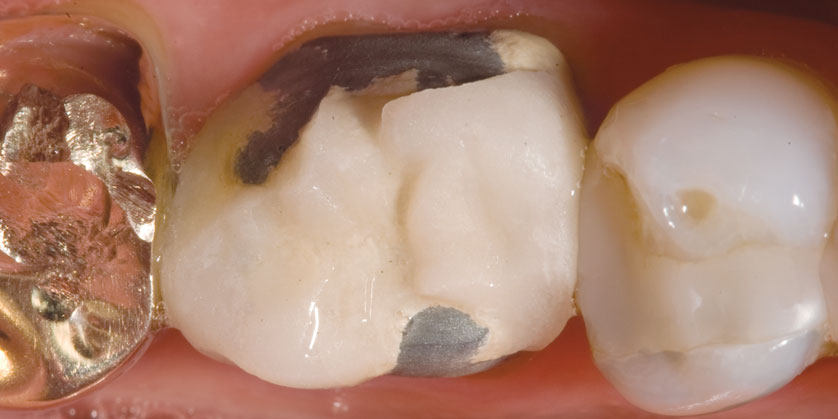
For more information, visit our website at www.brittenperio.com
If you have any questions about root canals (endodontic treatment), or any other aspect of dentistry that concerns you, contact our knowlegeable staff today at 727-586-2681.
[iphorm id=”3″ name=”Contact form”]
Gum recession is the process in which the gum tissue that which surrounds your teeth wears away, or pulls back, exposing the tooth’s root. If left untreated, gum recession may ultimately result in tooth loss. Most people don’t notice their gums receding because it occurs very gradually. You may notice tooth sensitivity, or that your tooth looks longer than normal. Sometimes a notch can be felt near the gum line with your fingernail. Gum recession is often caused by periodontal disease.
Causes:
Aggressive tooth brushing. If you brush your teeth too hard, it can cause the enamel on your teeth to wear away and your gums to recede. Clenching and grinding of the teeth can also contribute to gum recession and defects in the tooth roots. Many people do not even realize they have this habit, and many do it in their sleep!
Insufficient dental care, Inadequate brushing, flossing, and rinsing with antibacterial mouthwash makes it easy for plaque to harden into tartar or calculus, a hard substance that builds on and between your teeth and can only be removed by a professional dental cleaning.
Gum recession is not something you want to ignore. If untreated, gum disease leads to the destruction gum tissue and supporting bone that hold your teeth in place. If you think your gums are receding, make an appointment. There are treatments that can repair the gum and prevent further damage.
[iphorm id=”3″ name=”Contact form”]
Did you know?
Your dentist or dental hygienist may be able to tell if you have diabetes before you even know you do? Clues in the mouth, medical symptoms you are experiencing and reporting to them, and even a chairside test done right in the dental office can help your dentist determine that further testing for diabetes is necessary
A dentist can examine your mouth for clues of diabetes. There are signs in the mouth associated with diabetes:
-Periodontal disease
-Dental caries
-Burning mouth syndrome
– Oral candidiasis (common in those with poor glycemic control)
-Salivary dysfunction
-Neurosensory disorders
-Soft tissue abnormalities such as stomatitis or lichen planus
-Xerostomia
(Source: http://clinical.diabetesjournals.org/content/32/4/188.full)
Also, a patient that has 26% of periodontal pockets measuring 5 mm’s or greater or 4 or more missing teeth (not including the third molars), has a 72% chance of having a metabolic challenge. Diabetes is considered a metabolic disease.
Patients often see their dentist or dental hygienist more often than any other healthcare professional. Make sure to answer their questions thoroughly and accurately about your health.
Health risk factors for diabetes:
– Overweight or obese – BMI greater than 25
– High blood pressure
– Familial history of diabetes
– High cholesterol
– History of heart disease
– Other symptoms or complaints may include thirst, urinating frequently, constant fatigue, weight loss (Type 1), blurred vision, and uncontrolled infections even within the mouth (poorly controlled Type 2 diabetics).
Effective January 1, 2018, a chairside diabetes HbA1c (Hemoglobin A1c) test may be able to be performed by your dentist right in their office if they suspect diabetes or prediabetes. A patient with a test result of 5.7 or greater indicates a 92% chance the patient is metabolically challenged. At this point, your dentist can refer you to a physician for further testing.
Periodontal disease and diabetes have a direct effect upon one another. It is important to Dr. Britten to improve not only the oral health, but the overall health of each and every one of his patients. For more information on oral health and diabetes contact us at 727-586-2681.
[iphorm id=”3″ name=”Contact form”]
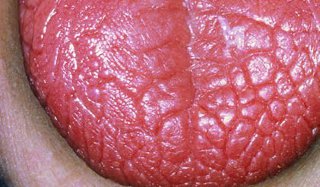
Did you know that 90% of pre-diabetics are unaware of their condition and 25% of Type II diabetics are unaware they have the disease? Many patients see their dentist or dental hygienist more often than they see their primary care physician. This is particularly true for people with periodontal (gum) disease, who require more frequent dental hygiene visits or gum treatments. Your dentist or dental hygienist should take a thorough medical history at each visit. Some of the things they should look for which could indicate diabetes or prediabetes. Risk factors that indicate a potential for diabetes or pre-diabetes include:
- Overweight or obese – BMI greater than 25
- High blood pressure
- Familial history of diabetes
- High cholesterol
- History of heart disease
- Other symptoms or complaints may include thirst, urinating frequently, constant fatigue, weight loss (Type 1), blurred vision, and uncontrolled infections even within the mouth (poorly controlled Type 2 diabetics).
There are also dental clues that may indicate diabetes.
- A patient that has 26% of periodontal pockets measuring 5 millimeters or more or 4 or more missing teeth (not including wisdom teeth), has a high chance of having a metabolic problem – and diabetes is a metabolic problem.
- Periodontal disease
- Dental caries
- Burning mouth syndrome
- Oral candidiasis (common in those with poor glycemic control)
- Salivary problems or dry mouth
- Neurosensory disorders
- Soft tissue abnormalities such as stomatitis or lichen planus
- Dry mouth
A chairside diabetes HbA1c (Hemoglobin A1c) test may soon be able to be performed in our practice, or if you have had a recent test with your doctor showing a result of 5.7 or greater indicates a 92% chance the patient is metabolically challenged. At this point, the patient should be referred to their physician.
If you are concerned about your oral health or are experiencing symptoms in your mouth or health that could be related to diabetes, contact us today 727-586-2681.
[iphorm id=”3″ name=”Contact form”]

